Coming to pre-order Friday 14 January 2022: new squadrons and aces for Blood Red Skies, a trio of new Italian vehicles for Bolt Action, and a pair of powerful rift-tech infused war machines for Konflikt ’47.
Bolt Action – Italian Armour
M11/39 Medium Tank
Heavily influenced by the design of the British 6-tonne tank the resultant M11/39 was the first modern gun-armed Italian tank and would replace the numerous outdated L3 tankettes in the Italian Regio Esercito. A medium tank with a pair of turret-mounted machine guns, designed to protect the tank from infantry assault, and a 37mm gun or 47mm gun mounted in the hull (for engaging hard targets), an operational range of 12 hours, and capable of around 30-35 kph it saw action in East and North African campaigns.
Although envisioned as a breakthrough tank, the M11/39’s career was cut short with the introduction of the M13/40, which was built on the same chassis. By the time the M11/39 saw any substantial combat against the British, the model made little impact, as the much heavier Matilda tanks simply struck them aside. Their use as static defences was ill-suited to the tank’s design.
Famously, a few M11/39s fell into Australian hands and were quickly pressed into service alongside M13/40 medium tanks they had also acquired. painting large white kangaroo emblems on all sides to avoid friendly fire…
L6 Lanciaflamme Flame Tank
The FIAT L6/40 was the final light tank design in widespread use by the Italian army. By the time the first L6/40 rolled off the assembly line, it was already obsolete and so was used as a battle tank only in the most desperate circumstances. The tank’s small size and low silhouette, however, made it ideal for reconnaissance duty. It saw action in North Africa, the Eastern Front, the Balkans and in Greece. Based on this design, the L6 Lanciaflamme replaced the 20mm main gun in the vehicle’s turret with a standard 30-shot flamethrower.
Autoblinda AB40 Armoured Car
Predecessor to the later, and more numerous, AB41 armoured car, the AB40 was largely identical bar the low profile turret mounting two 8mm machine guns. Built in small numbers in 1940, several AB40s would later be upgraded to the AB41 with its 20mm main gun and larger turret. It saw service in the invasion of southern France and in Libya.
Blood Red Skies – Twin-Engined Fighters & More
P-38 Lightning Squadron & Ace Pilot Richard Bong
The P-38 Lightning’s comparatively long range proved invaluable in the Pacific Theatre and for escort duties in deep penetration raids over occupied Europe, enjoying considerable success as a ground attack strike fighter.
The twin-engined fighter enjoyed its most extensive deployment and successes in the Pacific theatre. Though it could not outmanoeuvre the A6M Zero at sub-200mph speeds, its speed and rate of climb lent it the capability of making several high speed passes in combat, and Japanese aircraft armour was more susceptible than German aircraft to the tight groupings of the P-38s guns.
It was P-38s that engaged in the fighter-intercept mission that claimed the life of Admiral Isoroku Yamamoto, architect of the attack on Pearl Harbor. In this engagement, 16 P-38G lightnings met two G4M “Betty” transports and six escorting Zeros. Both transports were lost as well as two Zeros, for the loss of one P-38.
Kawasaki Ki-45 Toryu ‘Nick’ Squadron & Ace Pilot Isamu Kashiide
The Ki45 Toryu (Dragon slayer, Allied reporting name Nick) was a twin-engine heavy fighter patterned after the Me110 and its contemporaries, becoming one of the most important of the Imperial Japanese Army Air Force’s warplanes.
Initially deployed in bomber escort roles, it soon became clear that the Ki-45 was no match for single-engined Allied fighters in one-on-one combat. It was thus redeployed and with its heavy cannon armament enjoyed success as a formidable bomber hunter.
P-39 Airacobra Squadron & Ace Pilot William F. Fiedler Jr
The Bell P-39 Airacobra was one of the principal fighters in service with US Army Air Forces upon the nation’s entry into World War Two. It was also used throughout the war by (most prominently) the Soviet Air Force, the Free French, the RAF and the Italian Co-Belligerent Air Force, and thus service in most theaters, but particularly in the Southwest Pacific, Mediterranean and USSR.
Rejected for use in Western Europe by the RAF due to its relative inefficacy at high-altitude, the Soviets made good use of it on the Eastern front where the majority of air combats took place at lower altitudes. Under Soviet pilots, the P-39 collected the highest number of kills attributed to any US fighter type by any air force in any conflict.
Konflikt ’47
Chi-Nu with Compression Cannon
As the war in the Pacific has progressed, Japanese tank design has struggled to make gains against their adversaries. However, the application of proven rift-tech compression weapons within a heavier and better designed turret has delivered an effective medium tank based on the Chi-Nu, itself an upgrade of the Type-97 Chi-Ha. The Chi-Nu’s Improvements to the Chi-Ha’s chassis and engine, with heavier armour, and a heavier compression cannon have combined to produce a reliable, dangerous, and mobile medium tank. Whilst able to out-perform the older US tanks and most of the older Russian designs in use on mainland China, the Type 3-Hebi still lacks the capabilities of the latest generations of heavier tank but probably represents the limits of this particular chassis.
Having only reached the battlefield in 1947, the tank has made an immediate impact on the frontlines stretching across the Chinese mainland. Its use against US and Commonwealth forces in the wider Pacific has yet to be significant and it remains to be seen how it will fair in these terrains that are notoriously tough on armoured vehicles. Regardless, the ability of the compression cannon to literally rip apart medium vehicles will lead to concern to Allied commanders. Another positive of building on the existing Chi-Ha chassis has been the relatively simple manufacturing switch in Japan’s armaments factories. This should see steady production numbers and result in the tank becoming the mainstay of IJA armoured formations for years to come.
USMC M3A5 Pondskater Scout Walker
Already proven by the US Army as a combative recce vehicle in the European theatre, the Pondskater is a perfect vehicle for the complex terrain in the Pacific theatre of operations. With less space to conduct recce operations, the agile and robust Pondskater was quickly utilised by the USMC as a weapons platform, often with local or field modifications to replace the weaponry. After recognition at higher levels, the M3A5 was designed for the USMC, with improved water-proofing and wading capability, a slightly larger powerpack and purpose designed weapon options. It retains its two-man crew, and enhanced radio communications, even making it able to act as a rebro in dense terrain when fitted with a suitable antenna. When used as a weapon platform the M3A5 can be fitted with single or dual .50 cal machine guns or newly designed 75mm recoilless rifle, more than a match for most Japanese armour. The USMC can use the Pondskater in littoral operations and beach assaults, with its ability to wade ashore and engage defensive positions being vital to successful operations.
Overall the Pondskater is a fast and agile walker, and with the USMC’s reputation for versatility and ingenuity, has become a workhorse in the field. Whether it’s providing command communications, suppressing fire with HMGs or knocking out bunkers and tanks with its recoilless rifle, the Pondskater is involved at every level of Marine operations.
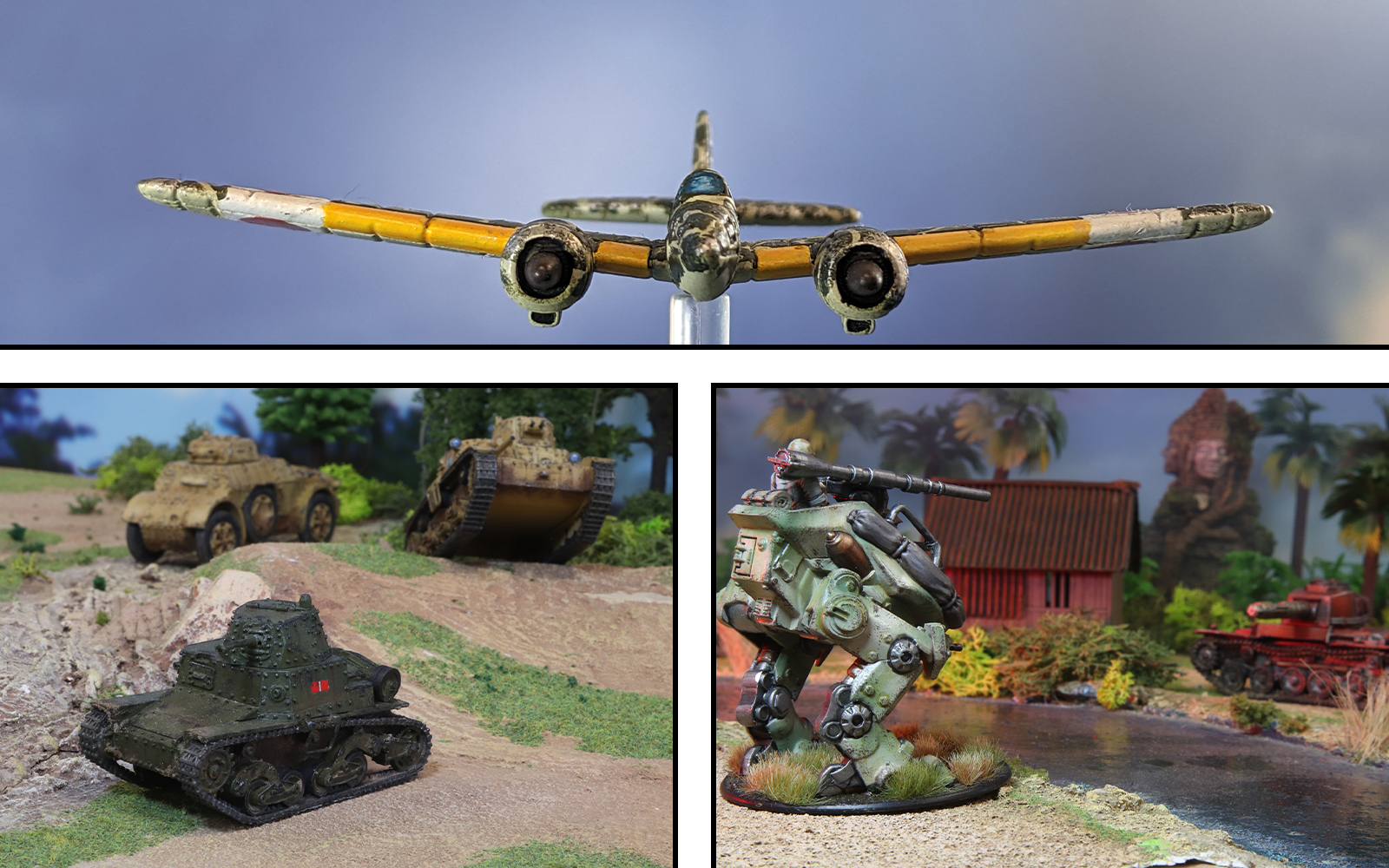
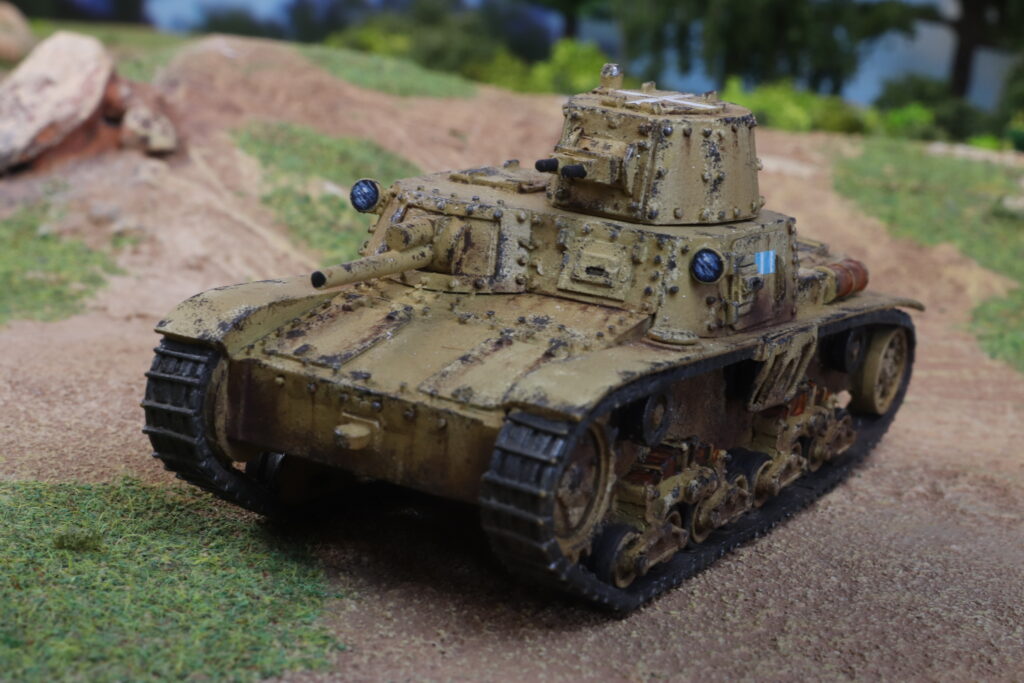
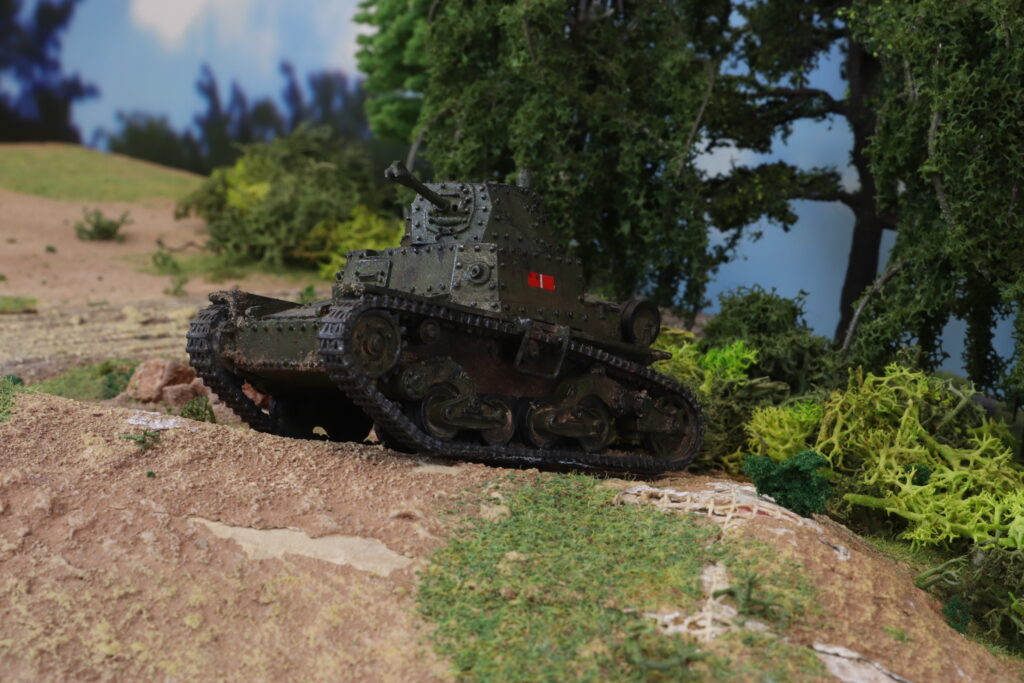
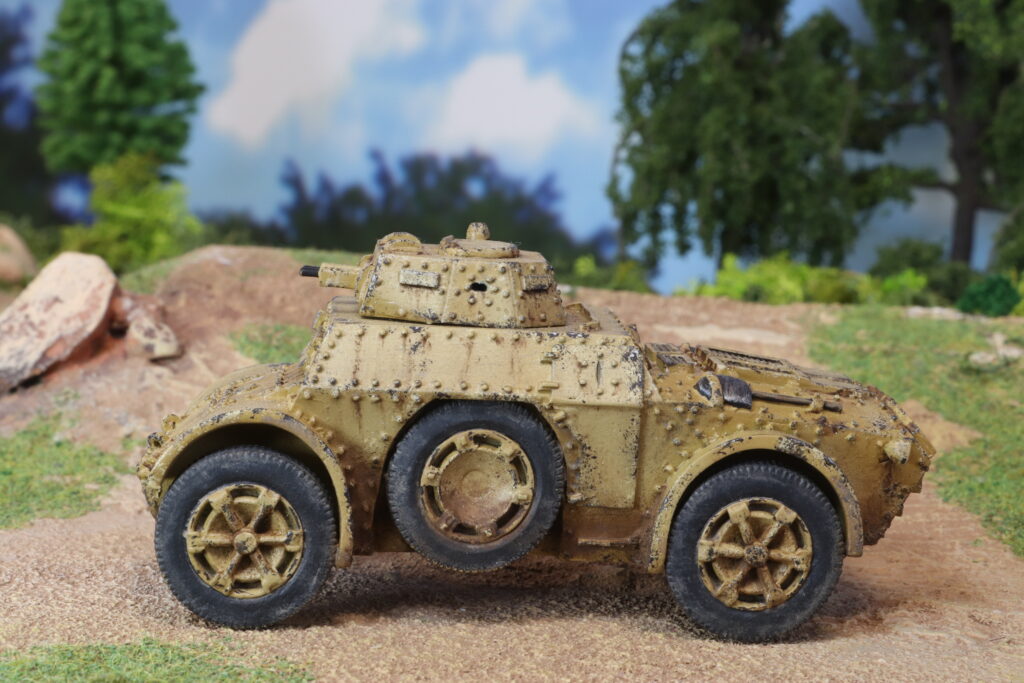
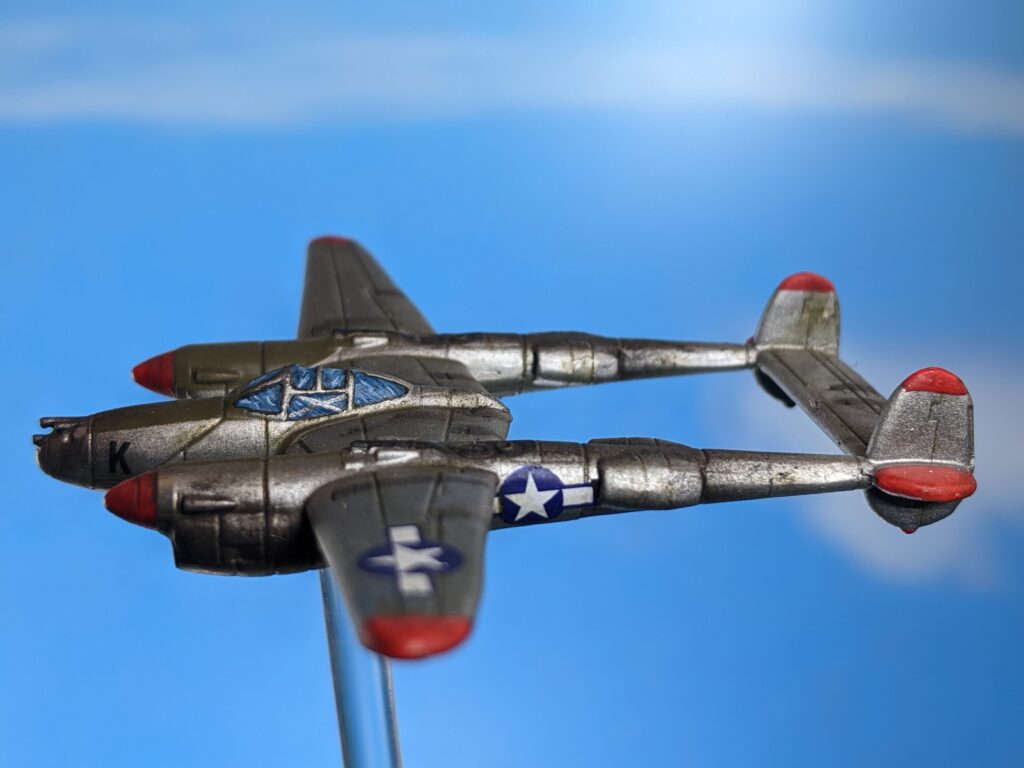
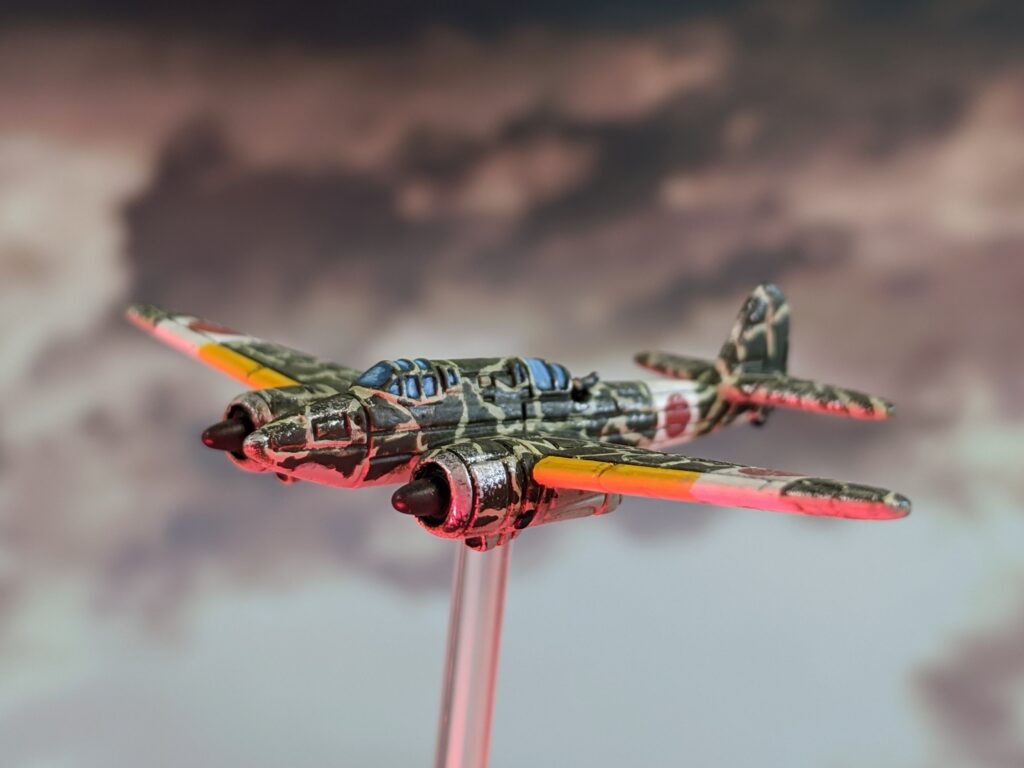
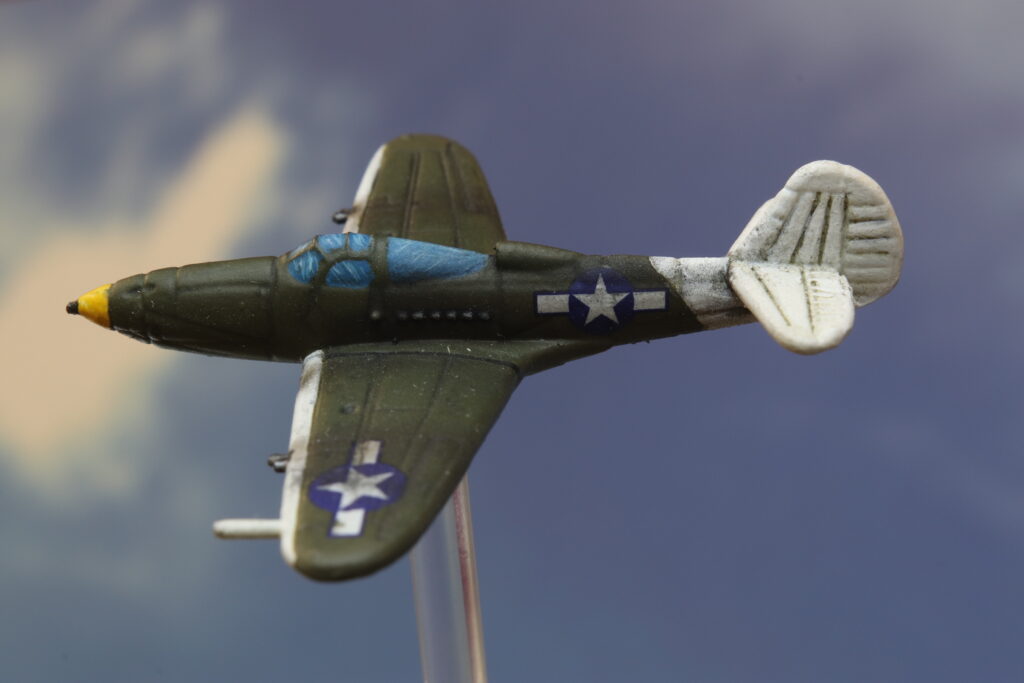
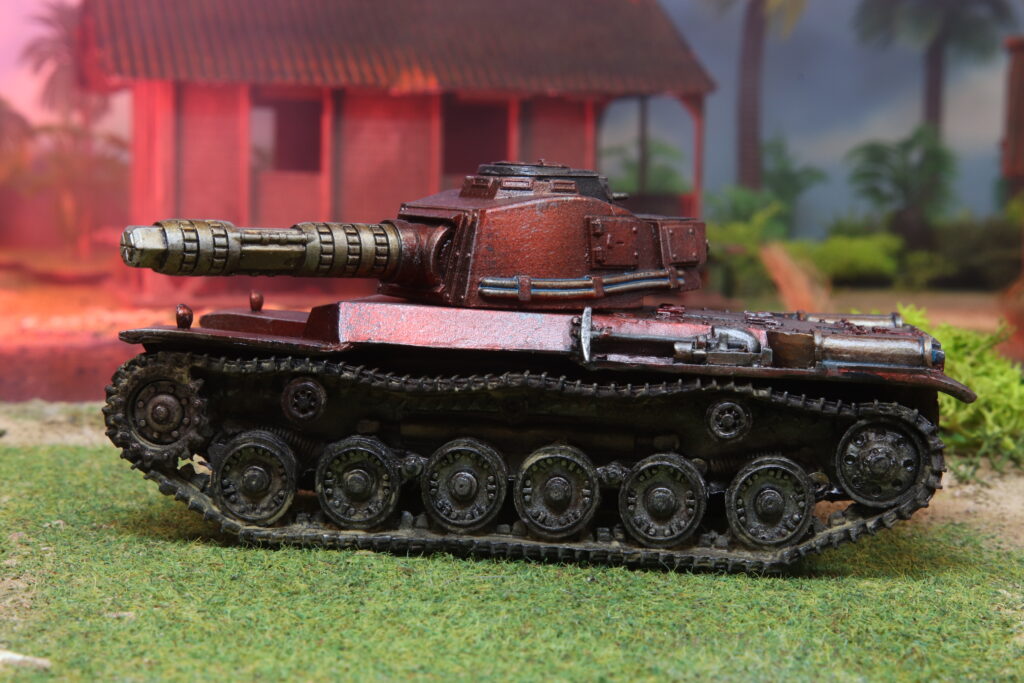
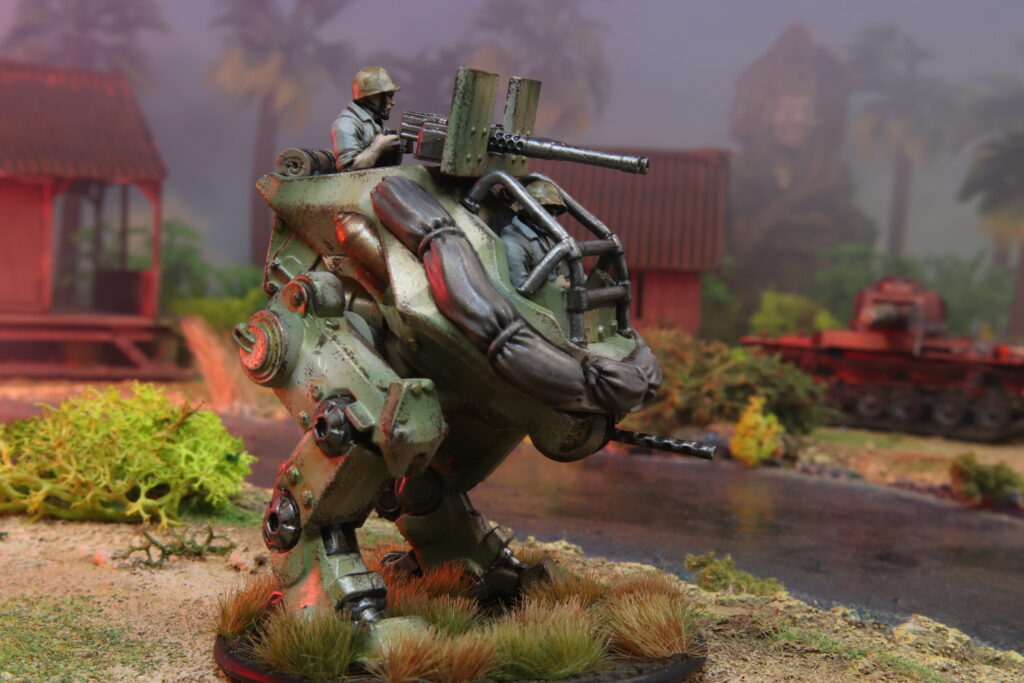
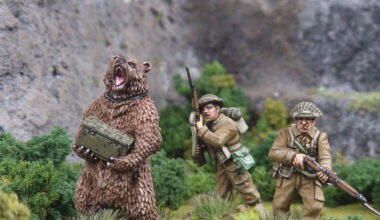
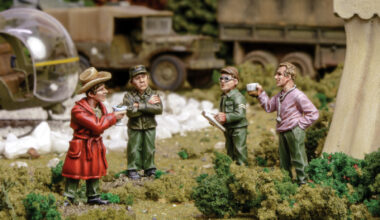
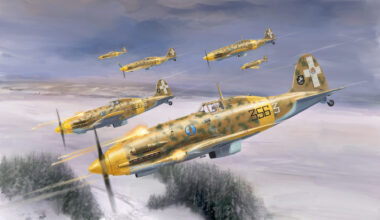
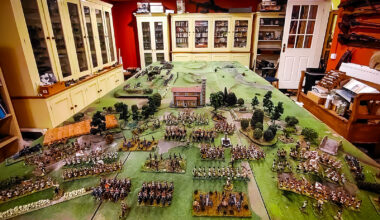
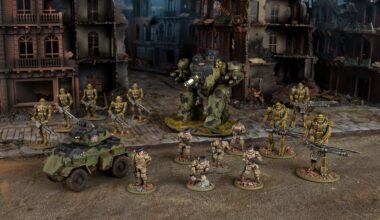
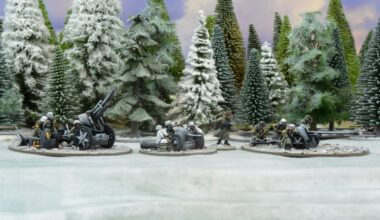
2 comments
Fantastic! Been wanting a squadron or two of P39 Airacobras to represent early war US since BRS came out.
Yes, but I use them for the USSR
Comments are closed.